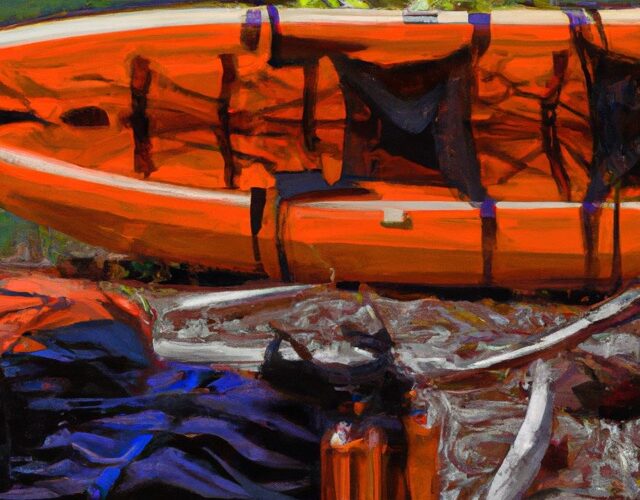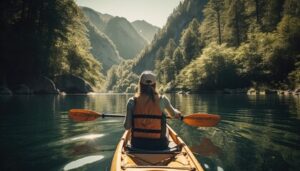Kayak camping gear refers to the equipment and supplies needed to camp while kayaking. Kayak camping is an outdoor activity that combines the thrill of kayaking with the joys of traditional camping.
It’s a way of escaping the hustle and bustle of the city and immersing yourself in nature! Kayak camping is becoming increasingly popular with outdoor enthusiasts because it allows them to explore secluded locations and conduct exciting activities, such as fishing or bird watching.
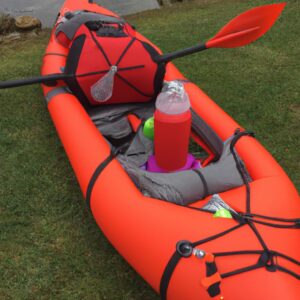
Although kayak camping involves some extra planning in comparison to traditional camping, it is still a very achievable activity as long as the right gear and knowledge are available. This guide will cover the basics of kayak camping, from choosing the right kayak to navigating the water safely.
Types of Kayaks for Camping
Kayak camping is becoming increasingly popular as a fun and adventurous way to explore the wilderness. Before you head out on your trip though, you must first choose the right kayak. There are a few different types to consider, each benefiting camping in its own way.
Sea Kayak
One of the most popular kayaks for camping is the touring or sea kayak. These kayaks are longer, generally 16-18 feet long and 25-32 inches wide. Touring kayaks are usually the fastest option, and they provide plenty of room to store gear and supplies.
They are also the most stable option, making them ideal for larger bodies of water like oceans and lakes.
Recreational Kayak
If you plan on taking shorter trips, recreational kayaks are also a great choice. They are shorter and wider than touring kayaks, usually 12-14 feet long and 26-30 inches wide. Their quicker turning and maneuverability makes them well-suited for rivers and smaller bodies of water.
Additionally, recreational kayaks have more storage space than other types, so you can still bring along plenty of camping supplies.
Inflatable Kayaks
Finally, there are inflatable kayaks. Unlike other kayaks, these kayaks can be deflated, folded, and transported in a backpack or other bag. While they may not be as stable or fast as hard-shell kayaks, they offer convenience and portability that the other types do not.
When choosing a kayak for camping, think about the type of environment you will be exploring, your budget, and how much gear you need to bring along. Each type of kayak has something to offer and will help make your camping trip great.
Essential Gear for Kayak Camping
Kayaking and camping is a great way to explore the outdoors. It’s important to make sure you have the essential gear to ensure you are safe and comfortable. Here is what you need for a successful kayak camping trip:
i. Paddle: A paddle is necessary to propel the kayak through the water. Make sure to get one that is the right size and weight for your kayak.
ii. Life Jacket (or PFD): A personal flotation device, or PFD, is a must-have. It will keep you afloat if you capsize, or fall out of the kayak. Make sure it is a type III PFD as they are made for recreational use in various weather conditions.
iii. Dry Bag: Waterproof dry bags are great for storing all of your essential items such as food, clothes, and other supplies. Avoid plastic storage containers as these can leak.
iv. Sponge: A sponge can help you remove excess water from the inside of your kayak. It also helps if you accidentally capsize and your gear gets wet.
v. Navigation Tools: Know where you’re going by bringing a map and compass. A GPS unit can also come in handy if you plan on doing any diving.
vi. Tent: Get a lightweight tent so it can be easily carried in the kayak. Make sure it is waterproof and has insect-proof netting.
vii. Sleeping Bag: To stay warm at night, bring along a quality sleeping bag. Make sure it is rated for the temperature of the area where you plan on camping. A lightweight sleeping pad is also a good idea for more comfort.
viii. Cooking Supplies: Pack light, easy-to-prepare meals for the trail. A camp stove and fuel, cooking utensils, and a small pot are all necessary. Disposable plates and utensils can also come in handy.
ix. First Aid Kit: Always bring along a first aid kit that includes bandages, antiseptic ointment, pain relief medication, and tweezers. Additionally, a pocket knife can come in handy in case of an emergency.
x. Clothing: Dress appropriately for the weather. Layering can help regulate your body temperature. Make sure to bring extra clothes in case you get wet and cold. Also, don’t forget to bring a hat, sunglasses, and sunscreen.
Now that you know the essential gear for kayak camping, you’re ready to start planning and packing for your next adventure!
Recommended Gear
When it comes to kayak camping, having the right gear is key. While the essential items are necessary for a safe and successful trip, there are also other pieces of gear that can enhance your kayaking and camping experience.
If you plan on taking longer trips or have more extreme conditions, these items can be a great addition to your kayak camping equipment.
For most recreational kayakers, some kind of shelter is essential. Tents, tarps, and shelters offer protection from the elements and provide a place to eat and relax. These come in all different shapes, sizes, and materials so you can find something suitable for your needs.
For added comfort and convenience, you may want to consider bringing along a sleeping bag and a sleeping pad as well as a camp stove and cookware.
If you plan on doing any fishing while on your trip, make sure you bring along the necessary equipment. A fishing rod, tackle box, bait, and lures are often a great addition to your kayak camping gear.
You should also consider bringing along a life vest and emergency supplies such as a first-aid kit and a flare gun.
Finally, don’t forget the basics like flashlights, a compass, sunscreen, bug repellent and an emergency whistle – just in case. All of these items will help make your kayak camping trip more enjoyable.
Packaging Your Kayak Camping Gear
When kayak camping, it is important to be organized and pack efficiently in order to maximize storage space on board. The key to smart packing is to plan ahead and bring only the essentials.
There are some tips that should be followed to ensure everything is packed correctly and safely.
- Organize your gear into separate bags or containers based on their purpose. This will make it easier to find items quickly and also keep related items together.
- Secure all items, making sure they are well-packed and securely held in place. This can be done with bungee cords, straps, or shock chords.
- Make sure all items are evenly distributed. Keep the weight balanced on both sides of the kayak to improve stability.
- Lightweight items such as clothes should be placed on the bottom of the kayak for better floatation.
- Place heavier items higher up in the kayak for better control.
- Pack valuable items in waterproof bags to protect them from the elements.
By following these best practices when organizing and packing essential gear, kayakers can ensure an enjoyable and safe camping experience on the water!
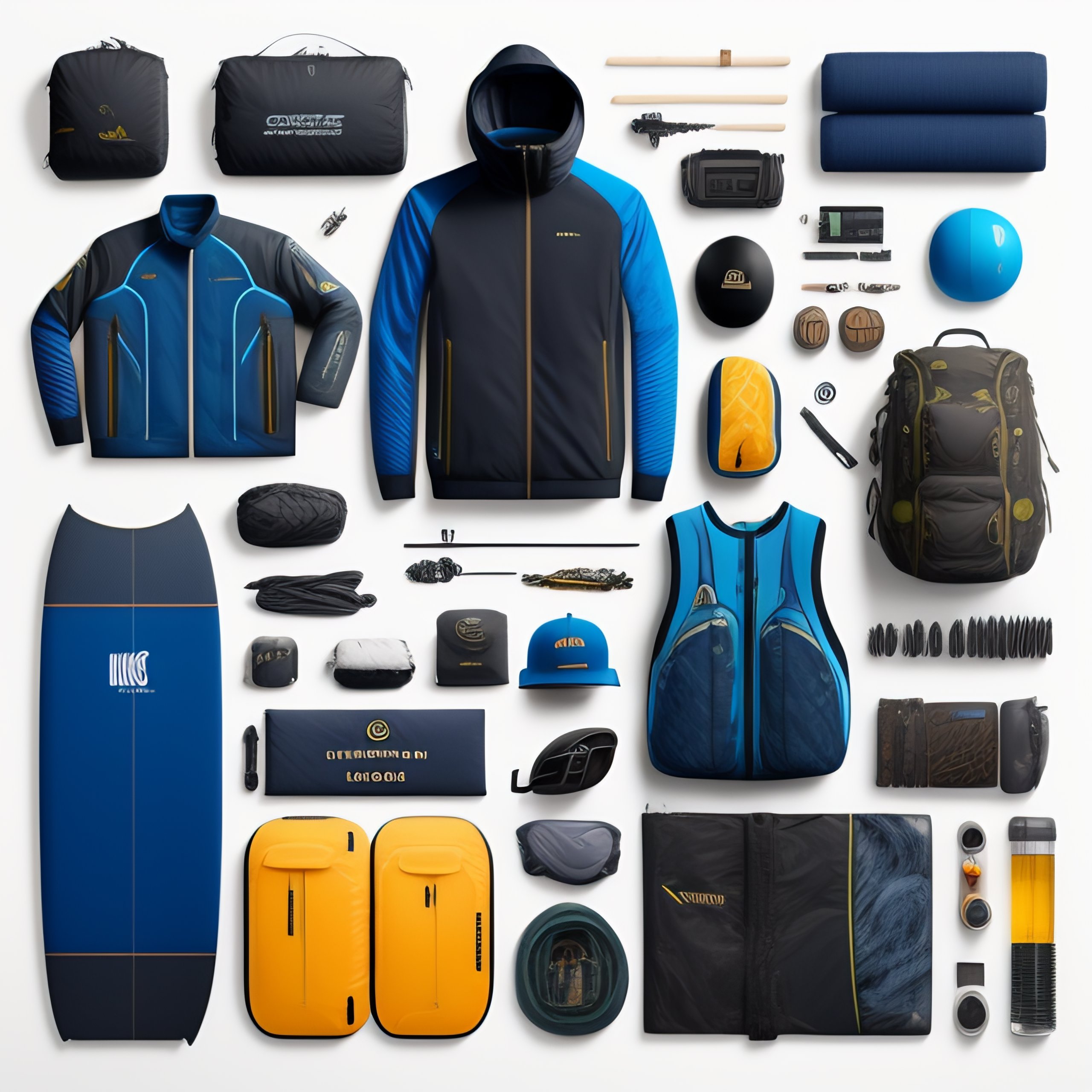
Navigating the Water While Kayak Camping
Kayak camping can be a thrilling and rewarding experience. One of the most important aspects of kayak camping is to be able to move around safely on the water. There are some specific guidelines that should be followed when navigating on the water with a kayak.
- Always wear a life jacket when kayaking—it’s an essential safety precaution.
- Be mindful of your surrounding environment and watch out for other vessels on the water.
- Know the local laws and regulations for each body of water you plan to navigate.
- Bring a map, compass, and navigation lights with you in case you need them.
- Be aware of the weather and tidal conditions at all times.
It is important to be aware of potential hazards while kayak camping in order to remain safe. It is helpful to familiarize yourself with the area you’re visiting before venturing out. Be sure to check the weather and tidal conditions intermittently throughout your travels.
With the appropriate preparation and knowledge, kayak camping can be a safe and enjoyable experience. Following these tips will help ensure your time on the water is a safe one.
Obtaining Permits
If you plan on kayak camping, it is important to first obtain the necessary permits and licenses required by law. Depending on where you plan on camping and the specific regulations in the area, you may need a variety of different permits.
For example, national parks and forests often require camping permits or special use permits, while many state and local parks require camping permits to be acquired. The fees for obtaining these permits vary and can range from free to expensive.
It is crucial to research your destination before going on a camping trip to make sure you have proper permits.
In addition, many water bodies have specific boating regulations that kayakers must follow. It is important to check with local authorities about speed limits, no-wake zones, and other safety requirements.
Permission may also be required for crossing common boundaries like international borders. It is important to be aware of all relevant regulations in order to have a safe and legal kayak camping experience.
Setting Up Campsite
If you’re planning to go kayaking, setting up a campsite is one of the most important preparations to make. It’s not hard to set up a good campsite, but there are certain steps involved that can help ensure your camping experience is as comfortable and safe as possible.
The following tips will help guide you through the process.
a. Find an appropriate spot. Look for a flat, level area away from trees and other potential hazards. Make sure the ground is firm and not muddy. Use the kayak to explore more lakes or rivers until you find a good spot.
b. Set up a campfire. Check local regulations before setting up a fire. Once you have the green light, clear an area for the fire ring and use rocks or stones to form a circle. Follow fire safety guidelines and make sure the fire is completely extinguished when you’re done.
c. Organize the campsite. Put all supplies and gear away from the fire and out of the tent. Use a tarp if available to cover your tent and belongings, and hang food bags out of reach from animals.
d. Make a sleeping area. Make sure the sleeping area is dry and away from the campfire. If there are any loose rocks or sticks, clear them out. Spread out a sleeping pad or foam mattress, then add a sleeping bag and pillow.
e. Check the weather. Always be prepared for changing conditions, especially while on the water. Have a plan in case of severe weather.
By following these simple steps, you’ll be able to set up a safe and comfortable campsite for your kayaking adventure.
Food and Water Management when Kayak Camping
When it comes to kayak camping, managing food and water is essential. It’s important to plan ahead and bring along enough food and water for the entire trip. Depending on how long the trip will be, bringing enough snacks and meals is important to keep up your energy while you are kayaking and camping.
Here are some tips on managing food and water when kayak camping:
- Bring along enough water for drinking and cooking. If possible, bring along a water filtration system or a potable water source.
- Pack non-perishable food items like high-energy snacks, dried fruits, nuts, and other items that won’t spoil easily during your trip.
- Bring along cooking equipment such as a small stove, kettle, and pots and pans.
- Keep your food in waterproof containers and store them securely when not in use.
- Plan your meals ahead of time and use lightweight meals that can give you plenty of energy.
- Make sure to dispose of garbage in a responsible manner. Do not leave it behind or put it in the water.
Managing food and water while kayak camping can be challenging, especially if you are going on a longer trip. However, with the right planning and preparation, you can ensure that you have enough food and water available for the duration of the trip.

Campsite Maintenance
When out kayak camping, it’s important to maintain the campsite and keep the area clean. This is not only important from an ecological standpoint, but it will also ensure that the camp area remains safe and comfortable for future use. Here are some tips on how to maintain the campsite:
- Be sure to pick up any trash and dispose of it properly. Do not leave any trash behind.
- Avoid walking on vegetation, or movements in and around the campsite that can damage the natural habitat.
- Do not build fires large enough to damage the environment. If you must build a fire, be sure to do so away from trees, shrubs, and other flammable materials. Make sure the fire is completely extinguished before leaving the site.
- Do not wash dishes or prepare food in or near bodies of water. Bring a portable sink and dispose of dirty water away from the water source.
- Familiarize yourself with local regulations regarding wildlife and the disposal of human waste. Be sure to follow the guidelines, and never introduce any non-native species into the environment.
- If you brought a pet, be sure to follow local leash laws and pick up after them.
- Leave the campsite in better condition than when you arrived. Take extra time to restore the area and make sure no trace of your presence remains.
By following these guidelines, campers can help maintain the beauty of the natural environment while enjoying their kayak camping adventure.
Common Challenges
Kayak camping can be a great escape from the hustle and bustle of everyday life. But it also comes with its own unique set of challenges. Especially when camping for longer periods. The most common challenges faced by kayakers include:
- Managing food and water – Finding ways to store an adequate supply of food and water for the duration of your trip.
- Navigation and orientation – Having the necessary skills to read maps, use a compass and determine location.
- Weather conditions – Knowing how to adjust to the ever-changing weather and how to respond in case of emergencies.
- Safety – Being aware of hazards and learning the proper safety procedures for paddling, setting up campsites, etc.
These challenges can be daunting, but with the right knowledge, preparation, and practice, kayak camping can be a very enjoyable experience.
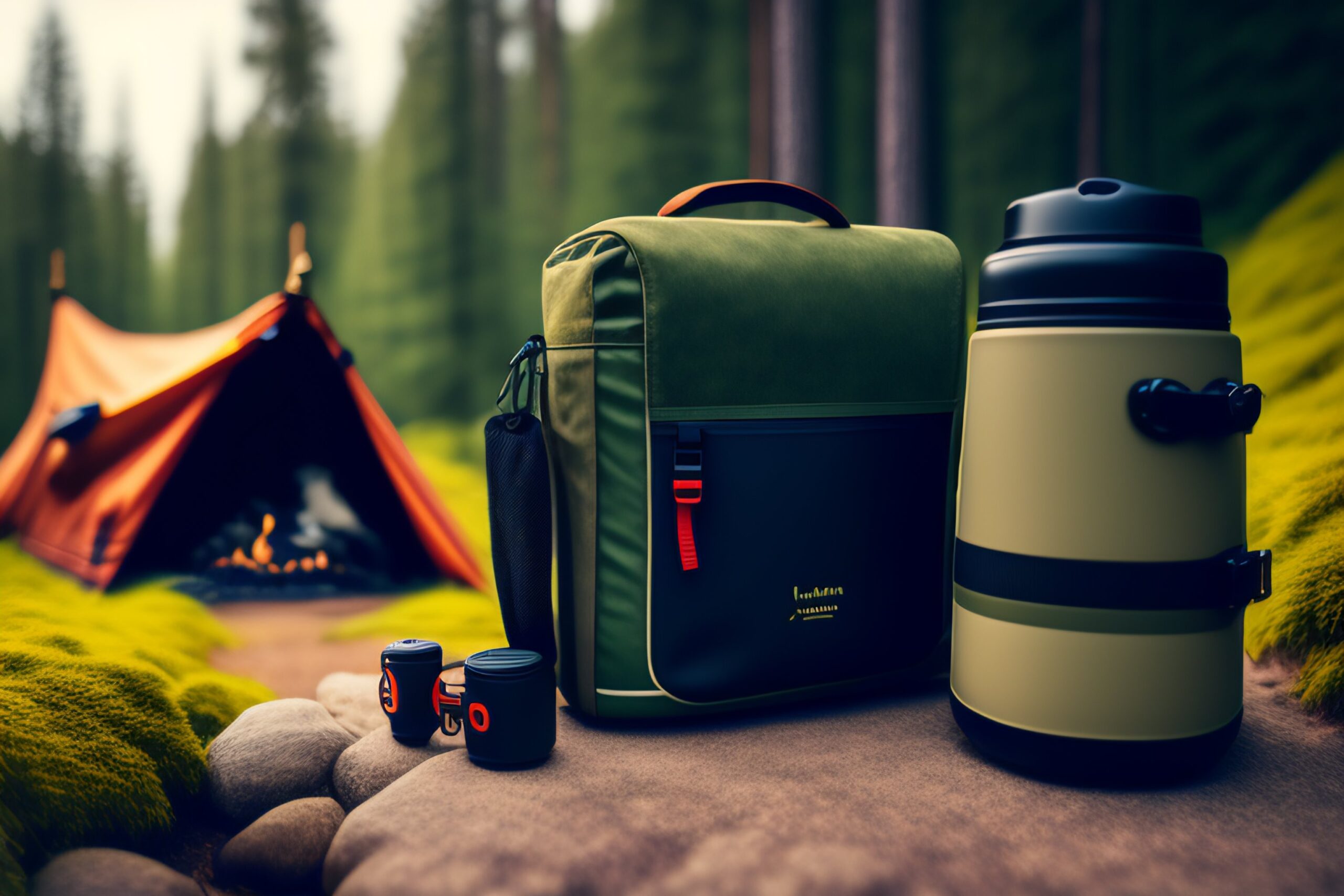
Conclusion
Kayak camping is an amazing way to get out and explore nature and push your limits. It requires careful preparation, as it is important to be well-equipped with the right gear and know how to navigate and take care of the environment.
This guide provided an overview of different types of kayaks, essential and recommended gear, navigation and permit considerations, campsite set-up and maintenance, and common challenges faced by kayakers.
With the right preparation and knowledge, paddling and camping can be a safe and enjoyable experience.
Kayak Camping Gear – FAQs
1. What is kayak camping gear?
Kayak camping gear refers to the equipment and supplies needed to camp while kayaking.
2. What are the essential items for a kayak camping trip?
The essential items for a kayak camping trip include a kayak, paddle, camping gear such as a tent, sleeping bag, and camping stove, dry bags for waterproof storage, and a repair kit. It is also important to bring along a first aid kit, headlamp, and easily accessible items such as a camp chair and water bottles.
3. What is the best kayak for camping?
The best kayak for camping is one that is spacious enough to accommodate all of your gear, but also lightweight and maneuverable. A touring kayak is a good option because it has more storage space, while a sea kayak is stable and can handle rougher water conditions.
4. What are some tips for packing a kayak for camping?
When packing a kayak for camping, it is important to make a packing list and organize your gear based on priority and weight. Pack heavier items first and distribute weight evenly in the kayak. Use dry bags to keep your gear dry and make sure everything is secured in the kayak. Pack items you will need during the day, such as water bottles and snacks, in easily accessible locations.
5. What is a kayak camping checklist?
A kayak camping checklist is a list of all the equipment and supplies needed for a kayak camping trip. It includes items such as a kayak, paddle, camping gear, dry bags, repair kit, first aid kit, and other essential items.
6. Can you go kayak camping with a partner?
Yes, you can go kayak camping with a partner. However, it is important to choose a kayak that is large enough to accommodate two people and their gear. It is also important to split up the essential gear so that each person is carrying a portion of it.
7. What are some essential items for multi-day kayak camping?
Some essential items for multi-day kayak camping include a larger tent, more food and water, a bigger camping stove, additional clothing, and extra batteries for headlamps.
